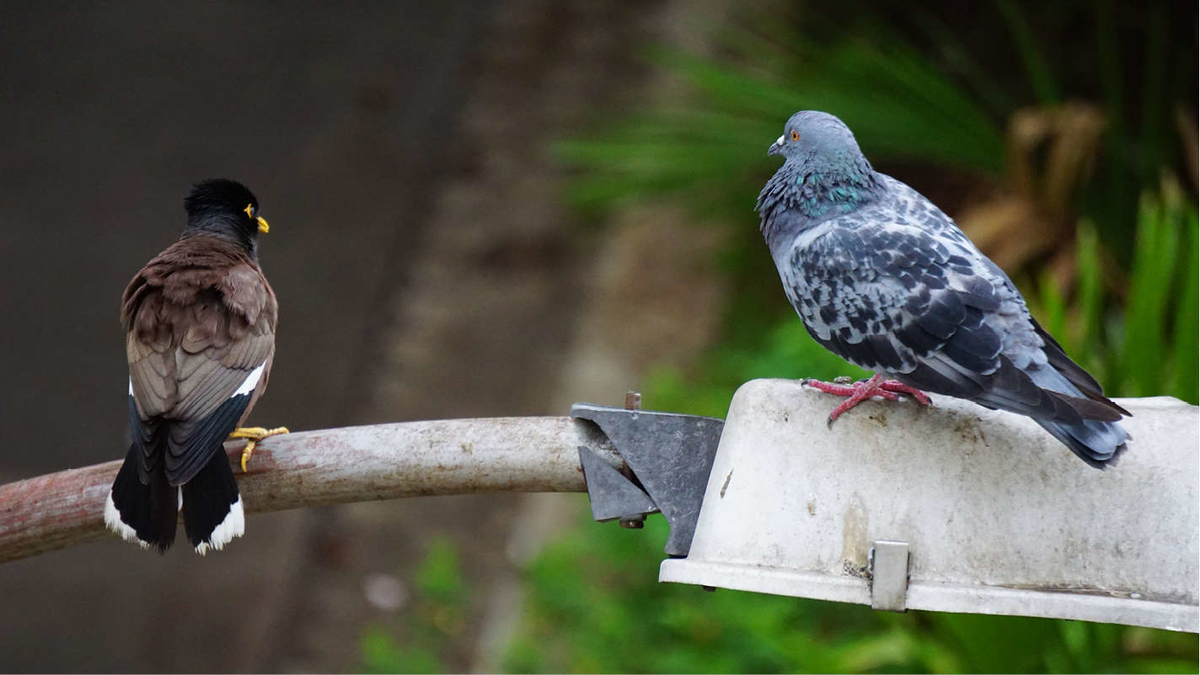The much-delayed arrival of monsoon in the National Capital Region (NCR) and its scanty spread has not left just us humans perspiring but also the birds of the city yearning for rain. In the Indian literary tradition, the rains are mainly associated with the pied cuckoo, which also finds the place of prominence in classical Sanskrit author and playwright Kalidas’ ‘Meghdootam’.
In his famous poetic treatise, the epochal poet draws a parallel between the thirsts of the pied cuckoo for the rain with that of the desire of a devoted heart of unison with the divine. It finds a place of prominence in the later literary traditions too, particularly in the verses of Surdas, Tulsidas, and Kabir with its local name — Chatak, the one who lives on the drop of rain.
However, those living in the concrete monoliths of metropolitan India, especially in the NCR, may have a completely different take on the rains and birds. The rain birds here are the commonly sighted mynas — India’s most ubiquitous neighbourhood bird.
The brown mynas have replaced the crows and the sparrows as the most spotted urban bird. In the national Capital, with their grey-coloured cousins, they are omnipresent. The common myna has a brown body, black head, and yellow patch behind the eye. Down South, the brown hue is deeper and it starts to get a tinge of grey as we move north.
With high-rise buildings now integral to the city’s skyline, the mynas have found a home in these enormous concrete structures, croaking, squawking, chirping, whistling, singing, and screeching from the nooks and crannies of the tall rises. However, when in pairs, they prefer silence and solitude.
While the Met departments notifications on the monsoon’s arrival and spread is full of inanities, like saying that the monsoon has arrived but the city remains deficient of rains, the waking and roosting cycle followed by the mynas can never give a wrong picture of the weather.
In winters, one can see them getting down the trees in apartment parking around 8 am. Come spring, with the sun rising, one can see them singing at 6.30 am.
They do to this escape hot winds that, as the summer advances, would start blowing from as early as 10 am. As the summer advances, one can watch them, their beaks open looking for water to quench thirst even at 6 am. What better indicator of the weather, certainly better than the Met department bulletin.
When the monsoon comes, the mynas are down early hopping on the grass. This year, the birds have had a long wait to see the grass get wet. But then there are bird lovers who blame the mynas for elbowing out the sparrows from the city’s skyline. It would be incorrect to blame the mynas for sparrows leaving, it has more to do with the ‘philanthropy’ of Dilliwalas.
For all the evils they do, a Delhiite finds catharsis by way of giving food and water to the birds, especially during the summer months. This has helped the Capital retain its avian population but largely that of the pigeons. Sparrow lovers believe that large populaces of the bigger birds — pigeons and mynas — have pushed sparrows out of their habitats, leaving them without places to nest and feed. This may be true but mynas cannot be blamed for sparrows leaving as the mynas themselves have faced the onslaught of the pigeons but have withstood the assaults and saved their turf.
Watching from the balconies of high rise buildings, one can see the pigeons threatening the mynas out from the nestling space and the smaller birds fighting back. With pigeons multiplying much faster than the mynas, the former move in large groups and shoo away the latter, something which is common to every community — human or animal.
Staying in high rise buildings, one can enjoy the company of the mynas on their balcony. At summer’s peak, one can hear them squeak and screech, hanging from the window frames, with great ferocity. However, one never hears them screech in the winter months. Unlike the pigeons, who dirty and destroy anything kept in the balcony, especially potted plants, the mynas sitting on these plants add to their beauty.
Coming back to the monsoon, come rains and one can watch these birds get down from the trees in the morning and enjoy splashing waters in the small puddles created all over. The beaks, with thirst taken care of, are seldom open during the monsoon and they can be seen merrily hopping around, looking for their favourite food — the worms.
When a 24-hour-long spell of rain last week left the city in deluge and streets in a jam, mynas provided a great respite. While some hopped on the wet earth beyond the footpaths, some remained perched on traffic signal posts in super-cop like regalia keeping an eye on the movement of vehicles and at times, even frowning at the jam.
There is this much-cliched saying that old habits die hard. The Delhiites are unlikely to give up the feeding of birds for personal catharsis, which in turn would keep the pigeons in good health and sparrows out of the city bounds. It’s a complex situation and one can seek solace in the hopping of the mynas to escape misery created by the excreting pigeons.
The writer is a political commentator and president, Centre for Reforms, Development & Justice.






















